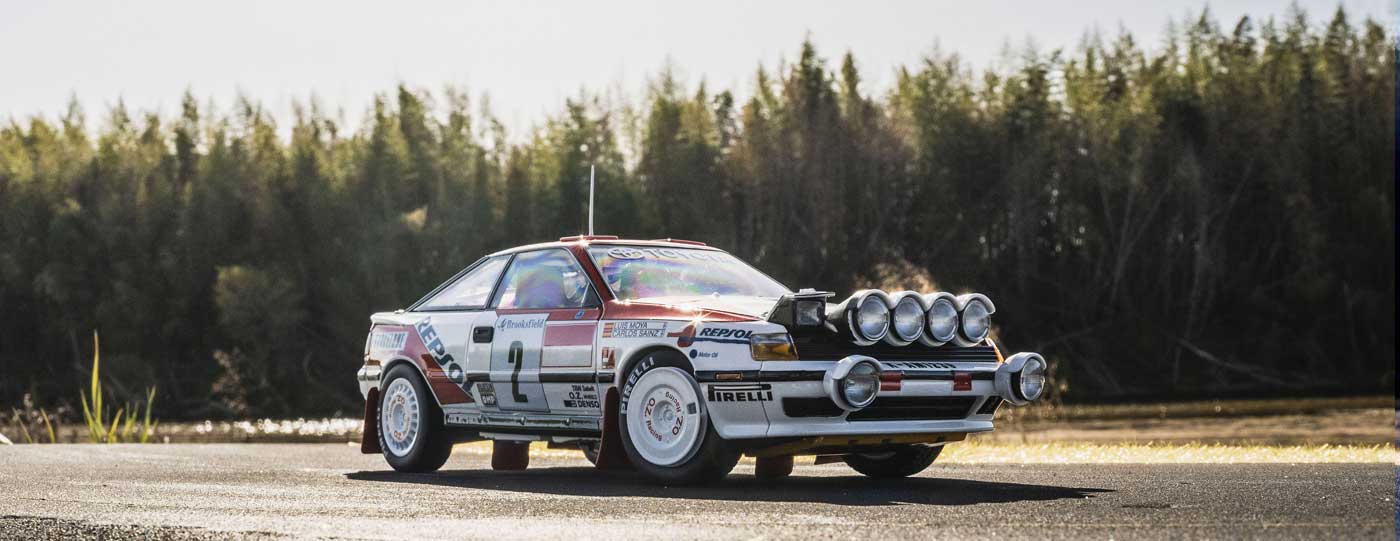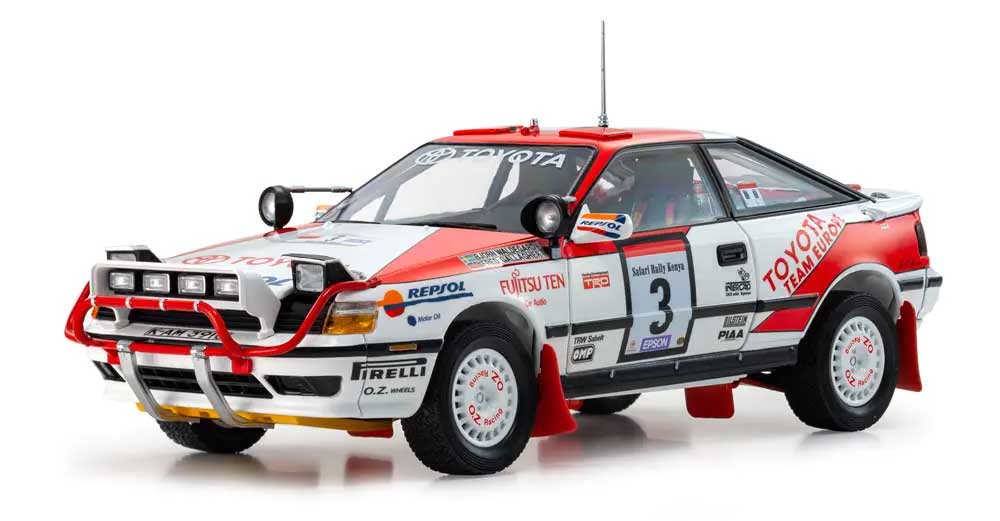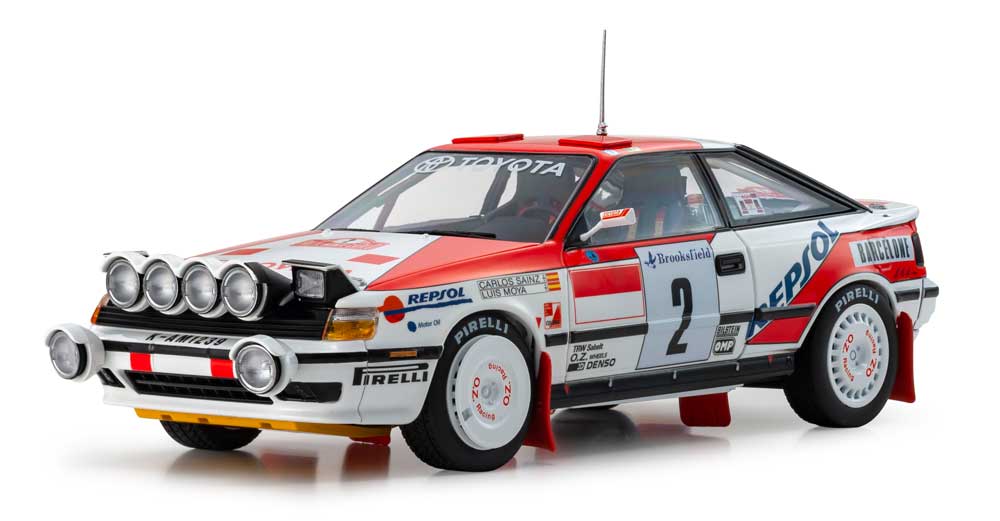1:18 scale DIE-CAST Model
Toyota Celica GT-FOUR
Having started participating in the WRC (World Rally Championship) from its inception in 1972, Toyota only fully committed to the competition in 1998. The rationale behind the change in direction from limited participation to full engagement was the dramatic lift of Toyota’s brand recognition and sales in Europe that a WRC victory would bring. The model chosen to execute this plan for world rally domination was Toyota’s first pure-bred 4WD sports car, the Celica GT-FOUR (ST165). Not only was the drive system changed from FR to FF (base model), but the exterior design was a complete shift from the wedge shape of its predecessor to the soft flowing style of the ‘stream surface’ that marked the arrival of a new era. Although results were mixed in its first year, the backing of Toyota’s financial and technical strength evolved the Celica GT-FOUR quickly into a potent rally racing weapon that scored its first victory in its second year of competition. With C.Sainz/L. Moya at the wheel, Toyota broke Lancia Delta’s stranglehold to win the first WRC title for a Japanese car in 1990. The victorious 1990 and 1991 season winning cars have been chosen as models, highlighting the different tarmac and gravel specifications.
MOVIE
Toyota Celica GT-FOUR
Detail (1990 Safari #3)
Gallery (1990 Safari #3)
Detail (Monte Carlo #2)
Gallery (Monte Carlo #2)












